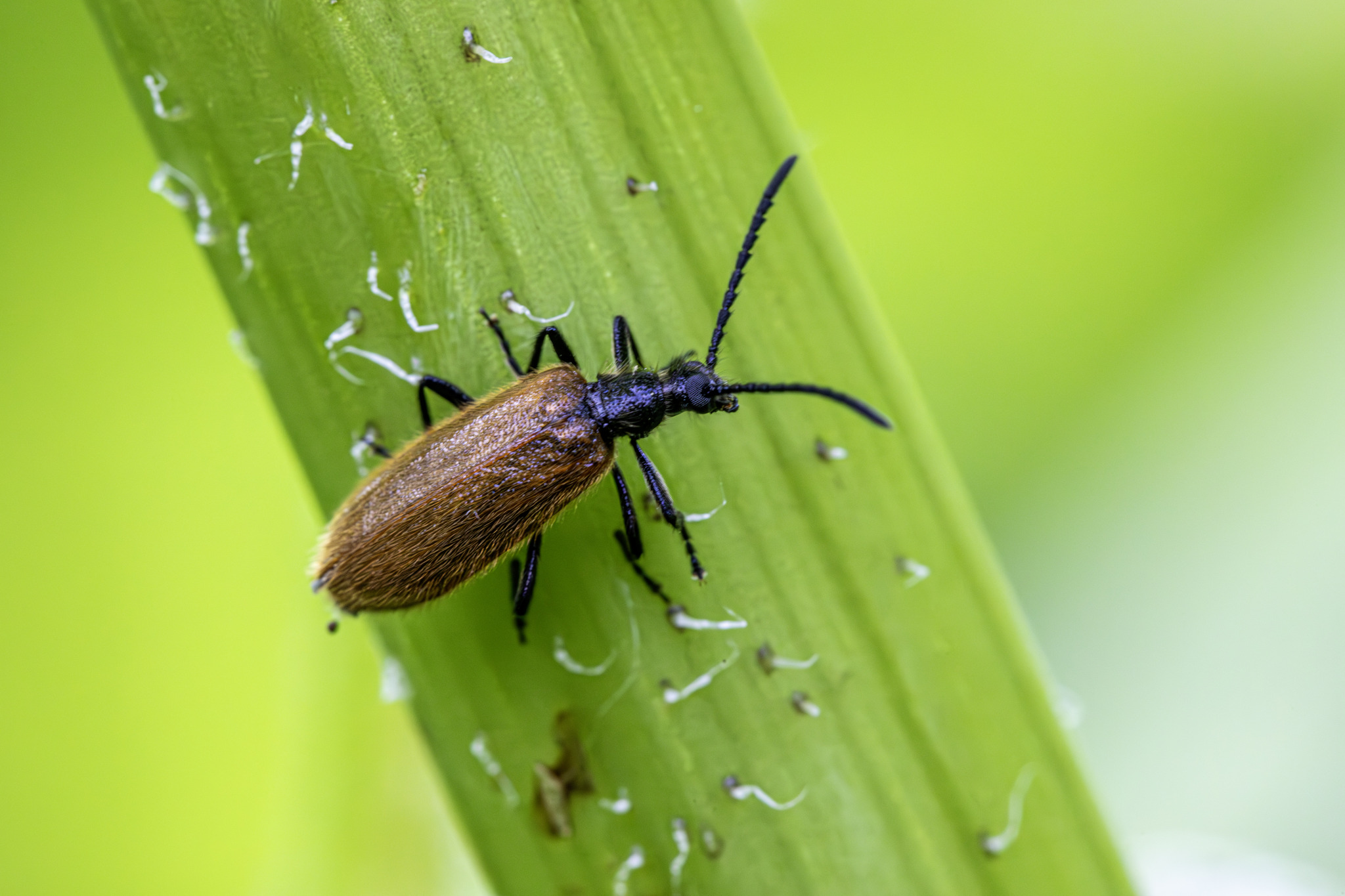The Rough-haired Lagria Beetle (Lagria hirta) is a member of the Tenebrionidae family, known for its distinctive hairy appearance and interesting behaviors. Here are some key details about this beetle:
Appearance
- Size: Adult Rough-haired Lagria Beetles are typically about 6-10 mm (0.2-0.4 inches) long.
- Coloration: They have a characteristic dark brown or black body. The elytra (wing covers) and thorax are covered with dense, short, yellowish or brownish hairs, giving them a rough, velvety texture.
- Shape: They have an elongated, slightly flattened body, with the head slightly narrower than the thorax.
Habitat
- Range: Lagria hirta is widely distributed across Europe and parts of Asia. They are commonly found in a variety of habitats, including meadows, forests, gardens, and agricultural fields.
- Environment: They thrive in environments with abundant vegetation, where they can find food and shelter. They are often found on flowers and leaves.
Behavior
- Diet:
- Adults: Adult Rough-haired Lagria Beetles primarily feed on pollen, nectar, and soft plant tissues. They are often seen on flowers.
- Larvae: The larvae are detritivores, feeding on decaying plant material, leaf litter, and other organic matter in the soil or leaf litter.
- Life Cycle:
- Females lay eggs on plants or in the soil.
- After hatching, the larvae live and feed in the soil or leaf litter until they pupate.
- The pupal stage lasts for several weeks before emerging as adult beetles.
Adaptations
- Camouflage: The beetle’s hairy, dull-colored body helps it blend into its surroundings, making it less visible to predators.
- Feeding Habits: The beetle’s preference for pollen and nectar helps in the pollination of various plants, although they are not as effective as some specialized pollinators.
Ecological Role
- Pollination: While feeding on flowers, adult Rough-haired Lagria Beetles can assist in the pollination process, though they are considered incidental pollinators.
- Decomposition: The larvae contribute to the decomposition process by breaking down organic matter, thus playing a role in nutrient cycling within the ecosystem.
Conservation
- Status: The Rough-haired Lagria Beetle is not currently considered endangered and is relatively common within its range.
- Threats: Habitat loss due to agricultural practices, urbanization, and pesticide use can negatively impact their populations.
- Conservation Efforts: Maintaining diverse habitats with plenty of vegetation and reducing pesticide use can help support healthy populations of this beetle and other beneficial insects.
The Rough-haired Lagria Beetle is an important part of its ecosystem, contributing to both pollination and decomposition processes. Its distinctive appearance and behaviors make it a notable species among the diverse beetle fauna.
Visited 974 times, 11 visit(s) today
Views: 1290
Subscribe to the newsletter:
